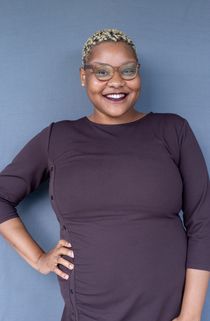Wellness

Ad
In my mid-20s, after spending some years navigating life beyond college, I decided it was time to try therapy. I felt the need to address unresolved traumas from my childhood and adolescence that seemed to be affecting my life well into my 20s. I felt stuck, as if I were repeating the same cycles over and over. It was like hitting a glass ceiling.
After some research and discussions, I started with behavioral therapy, which seemed like the logical first step. This type of therapy involves talking with your therapist, expressing your feelings, and receiving suggestions for tools to help manage the weight of past traumas and challenges.
After about a year in behavioral therapy, my therapist told me that while I had made some progress, I might benefit from something more. I was initially surprised and disappointed, feeling like I had somehow failed at therapy. I didn't realize there were other types of therapy beyond behavioral.
She recommended EMDR (Eye Movement Desensitization and Reprocessing) and explained it to me. According to the Cleveland Clinic, EMDR is a mental health therapy method designed to treat conditions stemming from traumatic memories. It’s mostly known for addressing PTSD and other conditions. My therapist provided me with information about EMDR, and I agreed to pursue the next chapter of therapy. She helped me find a new therapist, and the transition began.
At first, I was nervous because I wasn’t sure what to expect, but I knew this was a necessary step for my progress. EMDR reaches the deep parts of your memory where trauma and darkness reside. It’s like revisiting the trauma, but with guided exercises that help you reprocess it in a more positive light. This therapy aims to lighten the shadow that has been following you throughout life. Although it’s challenging, the experience is worth it to be on the happier side of life.

Whale Design/ Getty Images
I've been doing EMDR therapy for over a year now, maybe closer to two years. Since starting, I’ve noticed that it helps me process life differently. I’m no longer so quick to slip into a dark space. I’m learning to give myself more grace and to understand that the human experience is full of ups and downs.
The biggest lesson I’m learning is not to stay down during tough times. In the past, when something unfortunate happened, I would automatically link it to similar past experiences, layering all those dark feelings together, which left me feeling defeated.
Now in my early 30s, I believe therapy is an ongoing journey; it’s not about reaching a final destination. I remain committed to achieving peace and happiness for my past, present, and future self. With the support of my therapist, maintaining my faith, love from my community, and consistency, I’m improving each day. The mountain doesn’t feel as heavy as time goes on. EMDR is teaching me to extend grace to my past self, which makes room for the blessings to come.
If you're considering EMDR therapy, I encourage you to give it a try. Just remember that therapy is a relationship—it requires you to show up, be present, and put in the work, even when it’s uncomfortable. EMDR is a long-term commitment because it involves breaking down your traumatic experiences, fully feeling those emotions, and reprocessing those events.
Changing how you feel about life’s experiences takes time, especially if you’ve been carrying that pain for a while or if you’ve come to see your trauma as part of your identity. But you can do it, and you’re worth the effort.
Let’s make things inbox official! Sign up for the xoNecole newsletter for love, wellness, career, and exclusive content delivered straight to your inbox.
Feature image by Courtney Hale/ Getty Images
ALSO ON XONECOLE


